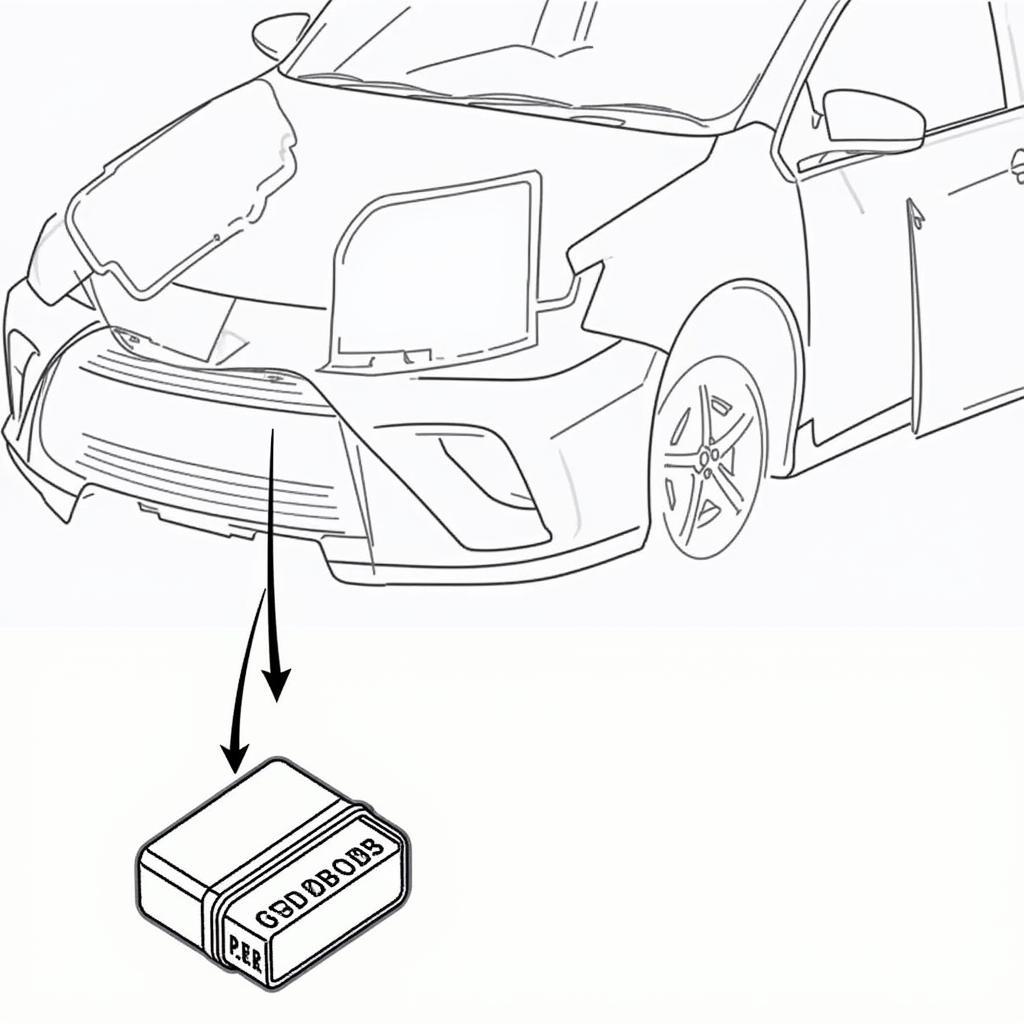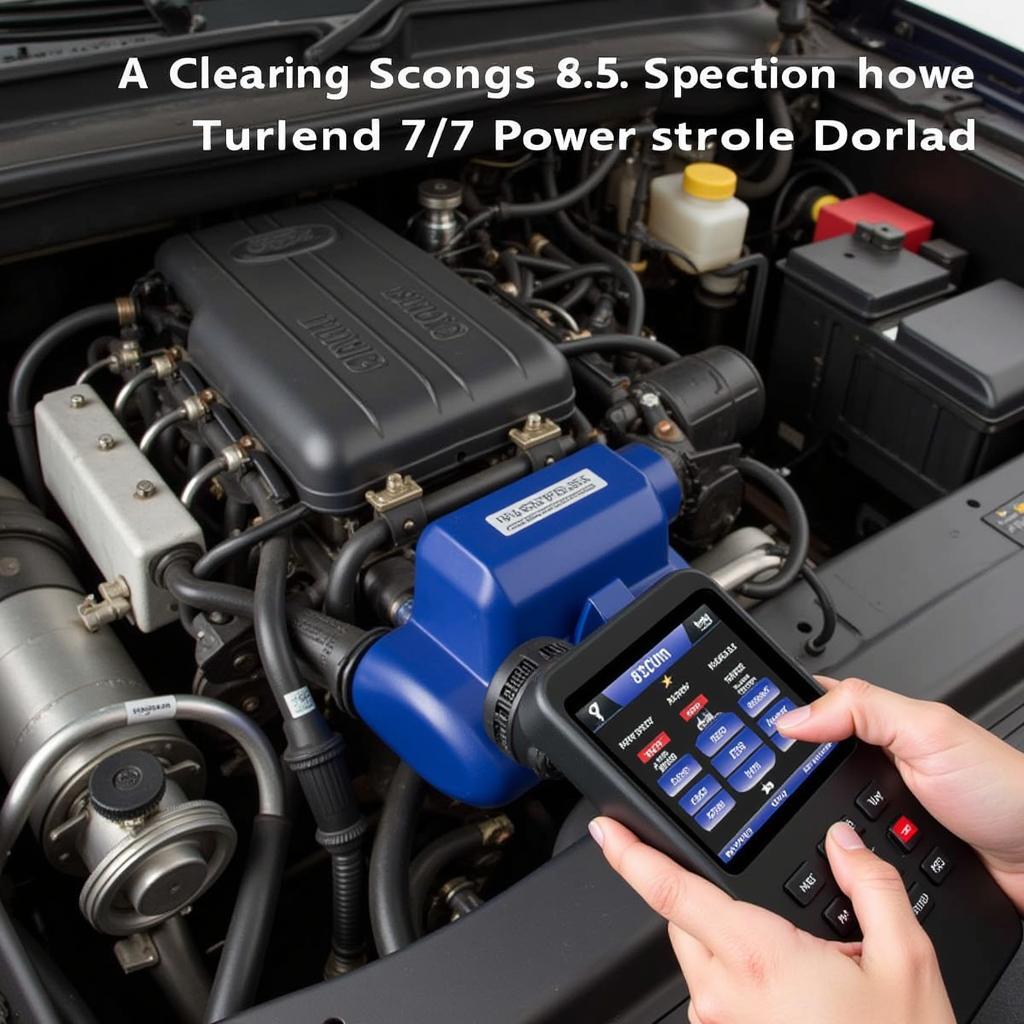Clearing Diagnostic Trouble Codes (DTCs) is often associated with using a scan tool. However, there are situations where you might need to clear DTC codes without one. While a scan tool is the preferred method for accurate diagnosis and repair, understanding alternative methods can be helpful in certain circumstances. Let’s explore How To Clear Dtc Codes Without A Scan Tool, the potential risks involved, and when it might be appropriate. You can learn more about different scan tools at our car error code scanner page.
The Battery Disconnect Method: A Simple Approach
The most common method for clearing DTCs without a scan tool is by disconnecting the vehicle’s battery. This method interrupts the power supply to the car’s computer, effectively resetting the system and clearing the stored codes.
Here’s a step-by-step guide:
- Safety First: Ensure the vehicle is turned off and parked safely. Wear appropriate safety gear, like gloves and eye protection.
- Locate the Battery: Open the hood and identify the negative (-) battery terminal.
- Disconnect the Negative Terminal: Use a wrench to loosen the nut securing the negative cable to the terminal. Carefully remove the cable from the terminal.
- Wait: The waiting period can vary. Some sources recommend waiting for as little as 15 minutes, while others suggest waiting up to an hour. Thirty minutes is generally a good starting point.
- Reconnect the Negative Terminal: Reattach the negative cable to the terminal and tighten the nut securely.
- Test the Vehicle: Start the car and check if the warning lights have disappeared.
The Fuse Removal Method: A More Targeted Approach
Another method involves removing the fuse that powers the car’s Engine Control Unit (ECU) or the OBD-II system. This method is more targeted than disconnecting the battery, as it only resets the ECU without affecting other vehicle systems.
- Identify the Correct Fuse: Consult your vehicle’s owner’s manual to locate the specific fuse for the ECU or OBD-II system.
- Remove the Fuse: Carefully remove the fuse using a fuse puller or pliers.
- Wait: Wait for a few minutes (typically 1-5 minutes) to allow the ECU to reset.
- Reinsert the Fuse: Place the fuse back into its slot.
- Test the Vehicle: Start the car and check for warning lights.
Understanding the Risks and Limitations
While these methods can sometimes clear DTCs, it’s crucial to understand the associated risks and limitations. Disconnecting the battery or removing the fuse can reset other vehicle systems, such as the radio, clock, and seat memory settings. More importantly, simply clearing the codes doesn’t address the underlying issue causing the problem. “Clearing codes without diagnosis is like treating a symptom without addressing the disease,” says automotive expert, David Miller, ASE Certified Master Technician.
Also, some modern vehicles require specialized scan tools to access and clear certain DTCs, especially those related to advanced safety systems. For complex diagnostic issues or persistent warning lights, a proper diagnosis with a scan tool, like the Actron CP9680 Autoscanner Plus DIY Scan Tool, is always recommended. Even a car reader vs scanner comparison shows the limitations of simple code readers.
When to Consider Clearing Codes Without a Scan Tool
Clearing codes without a scan tool might be acceptable in limited situations:
- After a Simple Repair: If you’ve performed a simple repair and believe the issue is resolved, clearing the code can confirm the fix. For example, if you replaced a faulty oxygen sensor, clearing the related DTC can verify the repair.
- Intermittent Issues: Sometimes, a temporary glitch can trigger a DTC. If the issue hasn’t reappeared after some time, clearing the code might be acceptable. However, if the code returns, further diagnosis with a scan tool is necessary.
 Clearing DTC Codes After Simple Car Repair
Clearing DTC Codes After Simple Car Repair
How to Clear DTC Codes with an iPhone Scanning Tool?
Using an iPhone scanning tool provides a convenient and cost-effective way to clear DTCs. These tools connect wirelessly to your iPhone and offer a user-friendly interface for reading and clearing codes. While they offer more functionality than the manual methods described above, they still require a compatible OBD-II adapter. “An iPhone scan tool is a valuable addition to any DIYer’s toolkit,” states Sarah Chen, Automotive Software Engineer. However, for professional-grade diagnostics and more complex repairs, dedicated scan tools remain the preferred choice.
Clearing Codes on a 2019 Jeep Wrangler
You might be wondering, does a 2019 Jeep Wrangler need scan tool? The answer is generally yes, especially for clearing more complex DTCs. While the battery disconnect method might work for some basic codes, using a scan tool is the recommended approach for accurate diagnosis and repair on a modern vehicle like the 2019 Jeep Wrangler.
Conclusion
Knowing how to clear DTC codes without a scan tool can be helpful in specific situations. However, it’s important to remember that these methods don’t fix the underlying problem and shouldn’t replace proper diagnosis with a scan tool. For persistent issues or complex diagnostics, consult a qualified automotive technician or visit ScanToolUS for expert advice and tools. We are located at 1615 S Laramie Ave, Cicero, IL 60804, USA. You can also reach us by phone at +1 (641) 206-8880.


